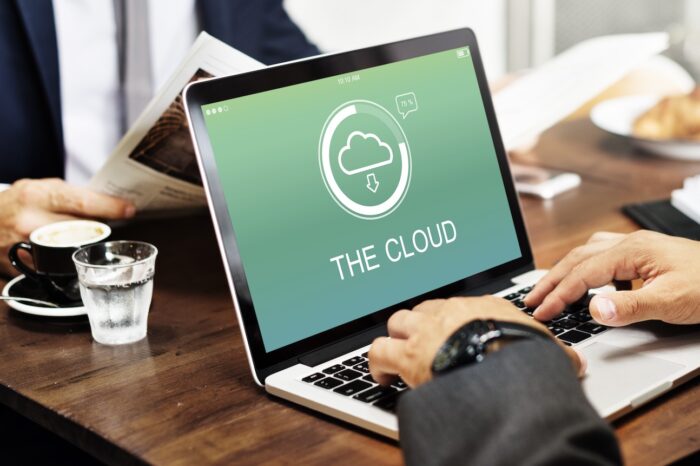How to Create an Effective Digital Security Plan for Your Business

A digital security plan is your company’s best defense against cybercrime. Implementing cybersecurity best practices makes your business a less appealing target to hackers. There will always be businesses that have yet to overhaul their digital security measures, making them much more tempting targets.
We’ve put together tips to help you create an effective digital security strategy that will protect your employees, customers, and assets.
Understand common digital security risks
Privilege abuse
It’s important to have a plan for privileged access management (PAM) to control access to sensitive company data and limit the risk of security breaches. Privileged accounts are an appealing target for hackers because gaining entry at the highest level of access gives them the biggest advantages.
As part of your digital security plan, define protocols for PAM. For example, many companies require privileged accounts to be secured with two-factor authentication, or that all work-issued devices be granted the least amount of access possible.
Abuse of privileged accounts is one of the leading causes of corporate data breaches, so it’s important to implement a system that ensures only leadership and departments such as IT have high-level access to company data.
Weak passwords
Many people get frustrated typing in long, complicated passwords or simply can’t remember them, so they default to weak passwords. Weak passwords like the ever-popular “123456” can be cracked within milliseconds. It takes zero effort, so hackers are always looking for these weak spots to quickly gain access to confidential information. Enforce strong passwords on all employee accounts.
Phishing attacks
Phishing attacks have been around for a long time, and they’re still as effective as ever. Over 90% of targeted attacks use spear phishing, a type of phishing email where the hacker spoofs a known individual’s email address.
Employees should be trained to identify phishing emails and understand the risks involved with clicking a malicious link or opening a compromised attachment. Some more sophisticated phishing emails don’t include attachments or dangerous links. Instead, they focus on winning over the recipient’s trust by posing as a colleague or authority figure within the organization. These are particularly insidious cybersecurity threats because they can be hard to spot.
Public Wi-Fi
Workers are using public Wi-Fi more than ever now that remote and hybrid work is becoming the norm. This poses a significant risk to your company’s digital security because these connections are not secure. Hackers commonly use the “man in the middle” attack to steal data from people using unprotected public Wi-Fi.
Secure your network
Install a network firewall
A firewall is a must for corporate networks. It monitors incoming and outgoing traffic and uses a defined set of security protocols to identify suspicious activity (e.g., malware or ransomware) and block it from accessing the network. It also protects ports that hackers commonly use to access your network and steal data.
Use a VPN
A VPN, or virtual private network, creates an encrypted internet connection that protects your online activities from prying eyes. It’s especially useful for workers who use public Wi-Fi when traveling or working remotely. A VPN can protect against “the man in the middle” attack, one of the most common attacks used against vulnerable public networks.
Update router firmware
All of your company’s sensitive information passes through your router, and outdated router firmware makes your network a tasty target for hackers. Always stay on top of firmware updates to fix bugs and patch known security issues.
Backup your data
Modern companies run on digital data, and losing this information can bring your business to a screeching halt or even shut it down permanently.
Your backups should be encrypted and stored across multiple devices and facilities. This means that if one server fails or is destroyed in a natural disaster, your data is still safe and easily recoverable.
To automate this process and make it easier, you can use providers such as Onehub to protect your data. We give our customers complete peace of mind by using bank-level encryption to protect data in transit and at rest. We store data with multiple redundancies and regularly perform integrity checks to ensure everything is secure.
Share files securely
Many employees carry over their file-sharing habits from their personal life into the workplace by sharing files by email. Any file shared by email is vulnerable to hackers. There is less risk involved with sharing personal files as they don’t generally contain sensitive information, but that is not the case with business files. Any data being shared by employees should be encrypted and transferred via a secure network connection.
Onehub takes file-sharing security a step further and offers password protection for shared files as well as expiration date options. You can also give direct file access to non-Onehub users via secure links.
Restrict administrative privileges
Prevent privilege abuse by restricting employee and contractor digital access to necessary areas only. Controlling user privileges means you can restrict access to sensitive information and limit or prohibit certain activities, such as installing software.
For the most impactful control of admin privileges, look for a file-sharing and cloud storage provider that offers granular control over users’ roles and permissions. Onehub allows you to invite users, grant or revoke access, and modify roles from one location. You can invite users on multiple levels, from Workspace to folder to file, and you can control whether a user is able to print, download, or modify a document.
Detailed control over access to your company’s data means you don’t have to worry about employees or clients abusing privileges or unintentionally causing a digital security incident.
Use two-factor authentication
A username and password combination is by far the most common method of account authentication. Unfortunately, 83% of Americans use weak passwords, so this method can easily be compromised.
Two-factor authentication is a much more secure method. It requires a password and a secondary piece of information such as a login code sent to a cell phone, a thumbprint, or a security token. This provides a serious upgrade to your digital security because it renders stolen passwords useless.
On all employee accounts, from email to cloud storage, be sure to enforce two-factor authentication if it’s available. Onehub offers this for our Advanced, Data Room, and Unlimited plans, along with many other powerful security features.
Train employees on digital security
Employees can be your main line of defense against digital security threats, or they can be ground zero for a cybersecurity disaster. The only thing separating the two is training. Train your employees to identify digital security risks and follow best practices to protect business data.
They should understand the difference between a secure password and a weak one, be able to spot potentially malicious emails and files, and know which contacts to notify if something goes wrong.
Consult a digital security expert
The tips above will get you off to a great start on your company’s digital security plan. However, to make sure it’s as comprehensive and effective as possible, consider hiring a digital security consultant. They can discuss the level of security your business needs based on the amount and type of data you have and help you identify the best software and protocols for your company.
Level up your digital security, cloud storage, and file sharing with Onehub’s free 14-day trial.
